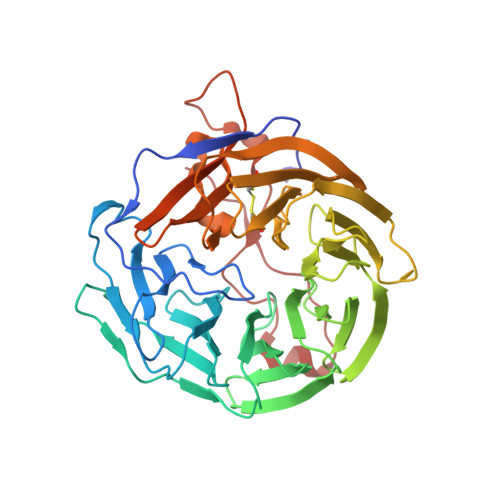Structure of Toxoplasma gondii coronin, an actin-binding protein that relocalizes to the posterior pole of invasive parasites and contributes to invasion and egress.
Salamun, J., Kallio, J.P., Daher, W., Soldati-Favre, D., Kursula, I.(2014) FASEB J 28: 4729-4747
- PubMed: 25114175
- DOI: https://doi.org/10.1096/fj.14-252569
- Primary Citation of Related Structures:
4OZU - PubMed Abstract:
Coronins are involved in the regulation of actin dynamics in a multifaceted way, participating in cell migration and vesicular trafficking. Apicomplexan parasites, which exhibit an actin-dependent gliding motility that is essential for traversal through tissues, as well as invasion of and egress from host cells, express only a single coronin, whereas higher eukaryotes possess several isoforms. We set out to characterize the 3-D structure, biochemical function, subcellular localization, and genetic ablation of Toxoplasma gondii coronin (TgCOR), to shed light on its biological role. A combination of X-ray crystallography, small-angle scattering of X-rays, and light scattering revealed the atomic structure of the conserved WD40 domain and the dimeric arrangement of the full-length protein. TgCOR binds to F-actin and increases the rate and extent of actin polymerization. In vivo, TgCOR relocalizes transiently to the posterior pole of motile and invading parasites, independent of actin dynamics, but concomitant to microneme secretory organelle discharge. TgCOR contributes to, but is not essential for, invasion and egress. Taken together, our data point toward a role for TgCOR in stabilizing newly formed, short filaments and F-actin cross-linking, as well as functions linked to endocytosis and recycling of membranes.
Organizational Affiliation:
Department of Microbiology and Molecular Medicine, Faculty of Medicine, University of Geneva, Geneva, Switzerland;
















